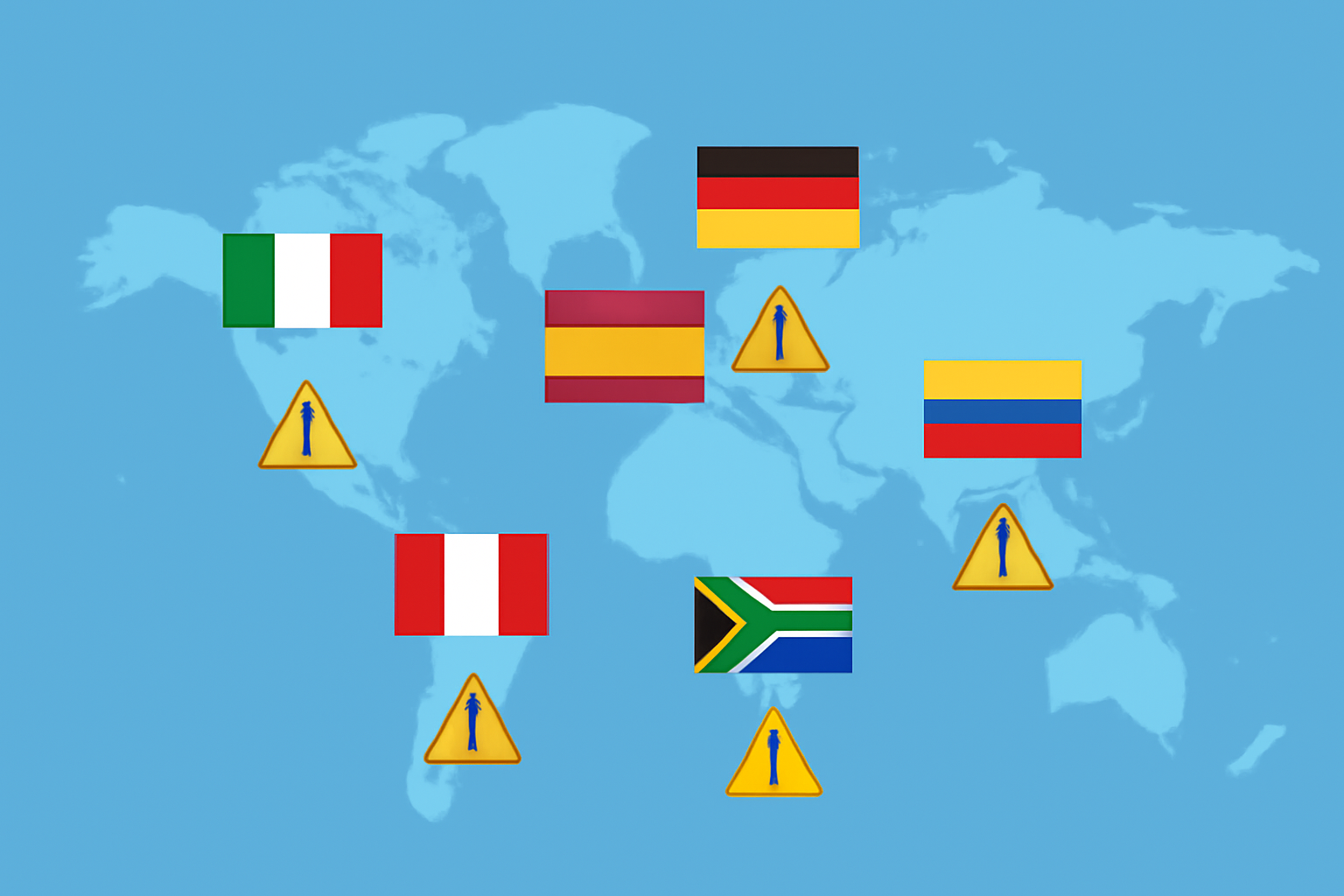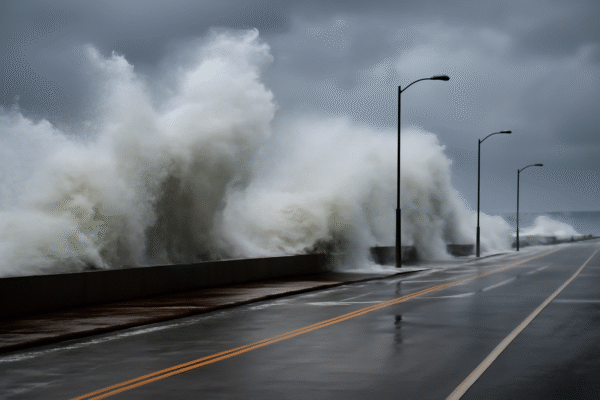The U.S. National Weather Service (NWS) has issued a High Surf Advisory and Coastal Flood Warning for several well-known beaches along the Maryland and Virginia coasts, including Ocean City, Chincoteague, and Virginia Beach. These warnings, which began early this morning, are the result of a powerful weather system causing hazardous surf conditions and rising tides that are expected to last through the evening. Travelers and residents should be prepared for disruptions, including beach erosion, property damage, and life-threatening rip currents.
Potential Impacts of High Surf and Coastal Flooding
According to the NWS, low-lying coastal areas, especially near shorelines and tidal waterways, may see flooding of up to 1-2 feet. The NWS warns that significant beach erosion is expected along popular coastal destinations like Ocean City, Chincoteague Island, and Virginia Beach. Many roads near the coast may be closed due to flooding, and vulnerable properties—including homes, businesses, and infrastructure—are at risk of damage.
What to Expect: High Surf and Dangerous Rip Currents
In addition to coastal flooding, the high surf conditions will create hazardous waves and dangerous swimming conditions across these regions. The Beach Hazards Statement is in effect through the evening, advising the public to avoid entering the water due to strong rip currents. Even experienced swimmers should stay onshore, as the risk of being swept out by the waves is high.
The NWS has issued these warnings to ensure that both residents and visitors stay informed and safe during the turbulent weather conditions. With beachgoers flocking to the coast for late summer vacations, it’s important to follow safety guidelines and avoid taking risks in the water.
Locations Affected by Coastal Flooding and High Surf
The following areas are expected to face the most significant impacts from today’s high surf and coastal flooding:
- Ocean City, Maryland: This popular tourist destination is expected to experience flooding around its iconic boardwalk, as well as beach erosion.
- Chincoteague Island, Virginia: Known for its wildlife and natural beauty, Chincoteague is highly susceptible to flooding, particularly along its shoreline.
- Cape Charles, Virginia: A historic town likely to see road closures and property damage as a result of rising waters and hazardous surf conditions.
- Virginia Beach, Virginia: A major beach destination for tourists, Virginia Beach is expected to face dangerous waves, posing a risk to both property and personal safety.
- Assateague Island National Seashore, Maryland: This scenic area could experience serious beach erosion and localized flooding, making travel near the shoreline hazardous.
What Travelers Should Do: Essential Safety Measures
- Stay Out of the Water: The NWS strongly advises that all beachgoers, especially inexperienced swimmers, stay out of the ocean. With the powerful rip currents, even seasoned swimmers may struggle to stay safe.
- Avoid Flooded Roads: Do not attempt to drive through flooded streets or barricaded areas. Rising waters can quickly submerge roads, making them unsafe to navigate. Always check local updates for road closures.
- Secure Property and Belongings: Residents and business owners in flood-prone areas should move essential items to higher ground and secure outdoor furniture or anything that could be displaced by the rising waters.
- Monitor Local News: Stay up to date with the latest weather alerts from the NWS and local news sources. Flooding conditions may continue into the weekend, with further impacts expected along the coast.
Safety Tips for Beachgoers
If you’re planning to visit the beach today or through the weekend, it is crucial to adhere to posted safety guidelines. Conditions can change rapidly, so always pay attention to warnings about rip currents, high surf, and storm surges. Even if the weather appears calm, the waves may become stronger and more dangerous.
Additionally, if you plan to enjoy coastal areas, be aware that access to certain beaches may be limited, as beach erosion could change the landscape quickly. While some beach areas may still be open, areas closer to the waterline may become inaccessible due to rising tides and rough surf.
Affect on Tourism and Local Communities
The combination of high surf, coastal flooding, and beach erosion will significantly impact local tourism and the surrounding communities. Many businesses along the shoreline may face closures or disruptions, particularly those that depend on beachfront access for their operations. Tourism-related activities, such as beach sports, water sports, and sightseeing tours, are expected to see delays or cancellations due to the hazardous conditions.
While the beaches themselves will still draw visitors, it is crucial to consider these disruptions before making plans to travel or partake in beach activities. Safety should always be the top priority during this severe weather event.
Conclusion: Stay Safe During Coastal Flooding and High Surf Warnings
The High Surf Advisory and Coastal Flood Warning issued by the NWS for Maryland and Virginia’s beaches are critical reminders for travelers and residents to stay informed and take precautionary measures. With the risk of flooding, strong rip currents, and beach erosion, it is essential to follow safety guidelines and remain on alert until the advisory is officially lifted.
This weather system presents both challenges and risks for beachgoers, residents, and businesses along the eastern U.S. coastline. Whether you are visiting or living in these areas, heed all warnings, follow official guidelines, and take the necessary steps to protect yourself and your property. With the right precautions, we can ensure that these weather events have as little impact as possible on both safety and enjoyment.
For more travel news like this, keep reading Global Travel Wire














